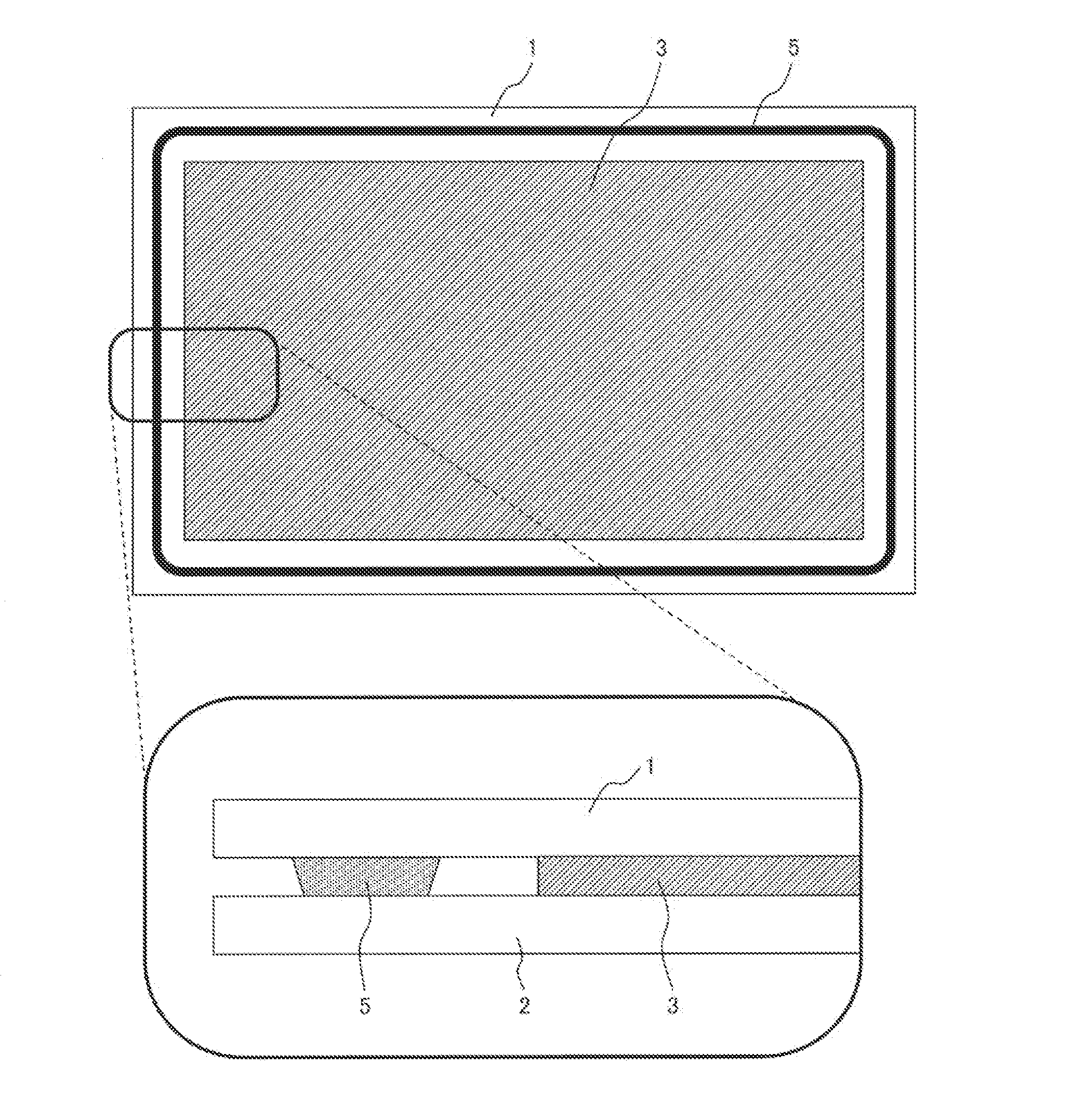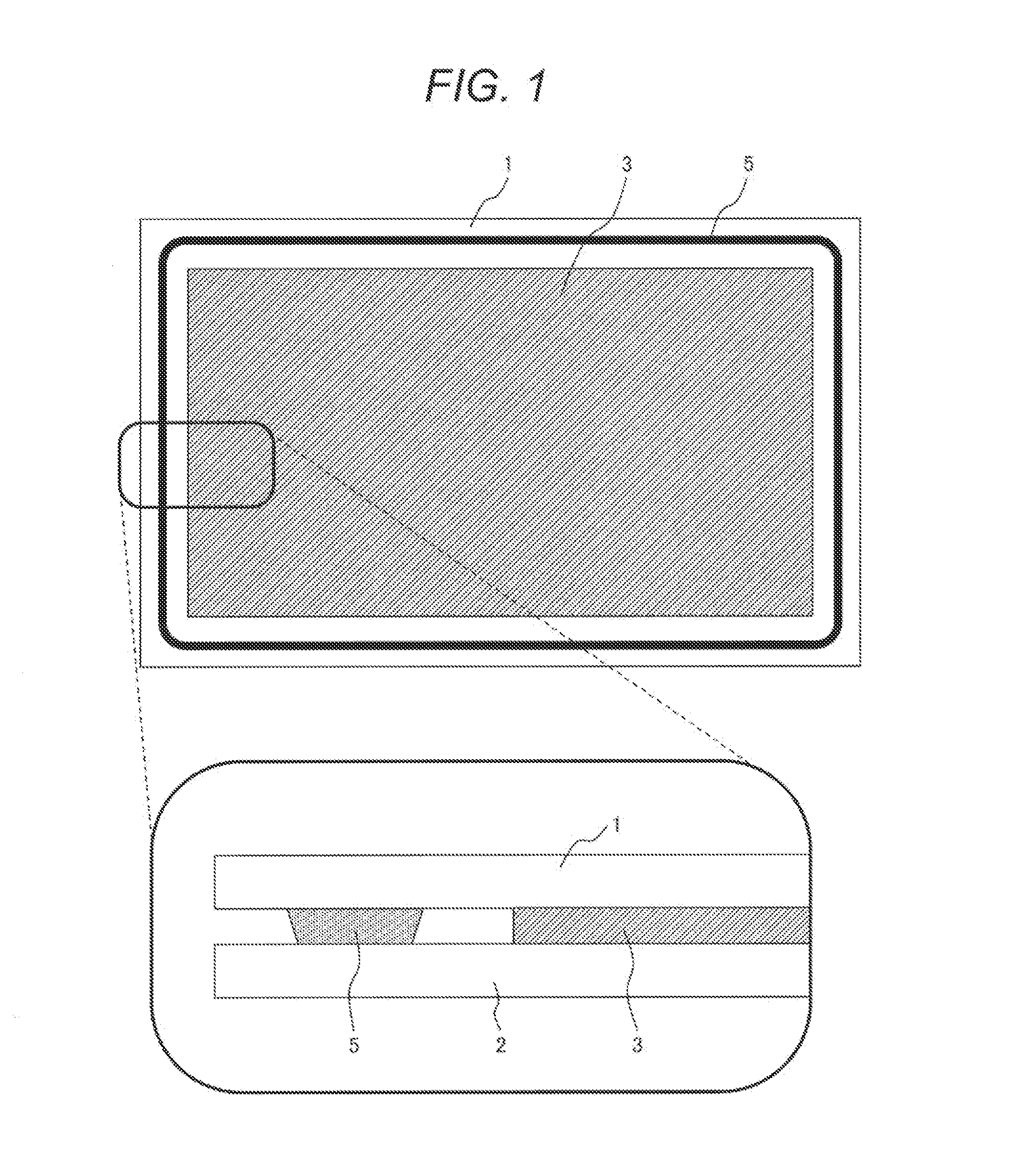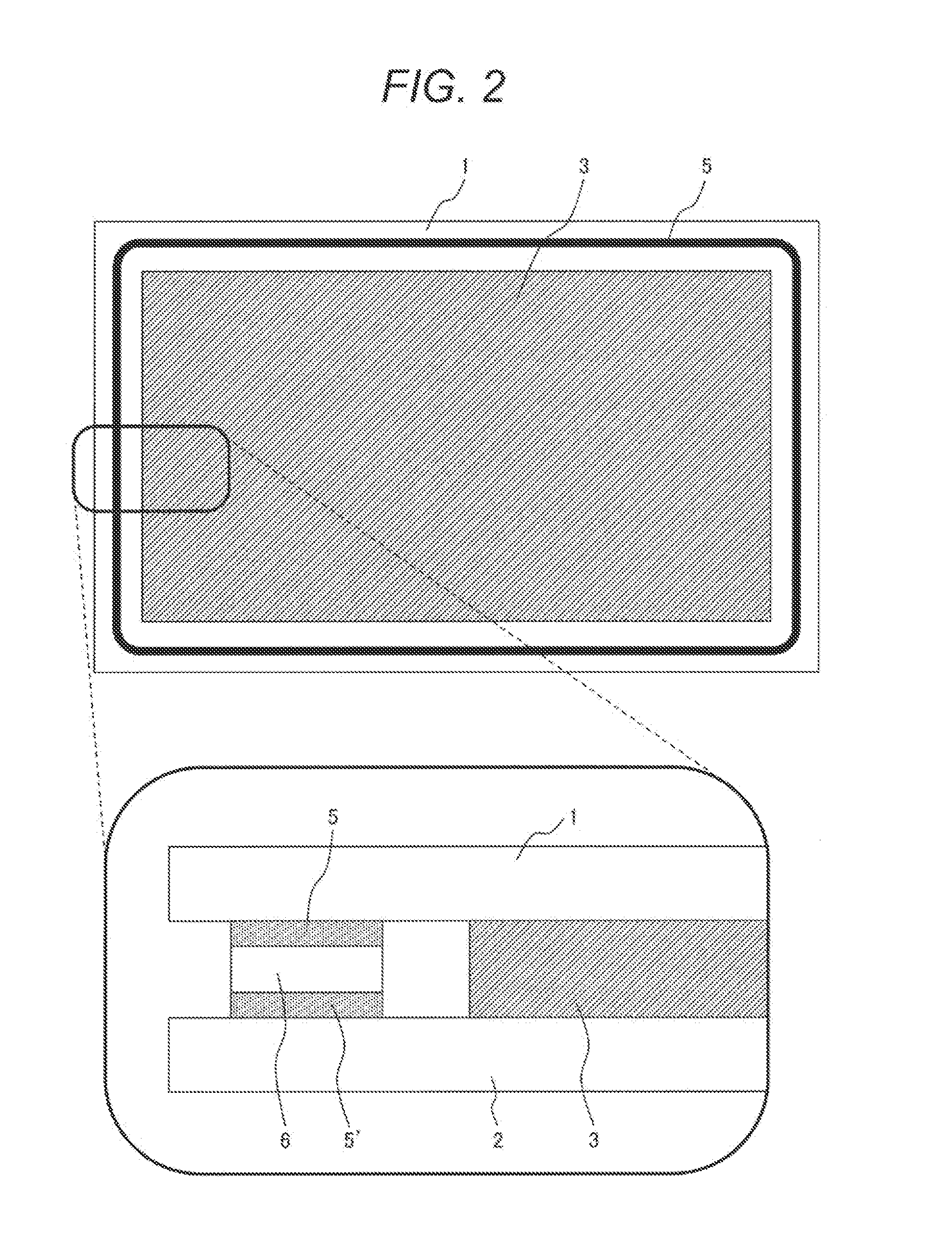Electronic Component, Method for Producing Same, and Sealing Material Paste Used in Same
a technology of electronic components and sealing materials, applied in the field of electronic components, can solve the problems of poor resin bonding and insufficient reliability of resin bonding, and achieve the effects of reducing thermal damage to an organic element, high reliability, and efficient production of electronic components
- Summary
- Abstract
- Description
- Claims
- Application Information
AI Technical Summary
Benefits of technology
Problems solved by technology
Method used
Image
Examples
example 1
[0062]In this example, compositions and characteristics of low melting glasses contained in a sealing material were investigated. Tables 1 to 4 show examples and Table 5 shows comparative examples. For manufacturing low melting glasses illustrated in Tables 1 to 5, reagents of V2O5, TeO2, Fe2O3, P2O5, WO3, MoO3, MnO2, ZnO, SrCO3, BaCO3 and CaCO3 manufactured by Kojundo Chemical Laboratory Co., Ltd. were used as raw materials. The materials were used and blended and mixed by predetermined amounts so as to be 300 g in total, charged in a platinum crucible, and heated to 900° C. and melted at a temperature elevation rate of 5 to 10° C. / min by an electric furnace. They were kept for 2 hours while stirring at that temperature in order to form homogeneous glasses. Then, the crucible was taken out and the molten glass was cast onto a stainless steel sheet previously heated to 150 to 200° C. to prepare low melting glass.
[0063]The prepared low melting glass was pulverized by a jet mill to a ...
example 2
[0077]In this example, a laser sealing experiment was performed by using the low melting glass in Example G12 shown in Table 2 and a slide glass as a transparent substrate. A sealing material paste was prepared by using a powder of the low melting glass of G12 pulverized to a mean particle diameter of 3 μm or less by a jet mill, a resin binder and a solvent. Nitrocellulose was used as the resin binder and butyl carbitol acetate was used as the solvent.
[0078]The sealing material paste was used and coated to the outer peripheral portion of a transparent substrate by a dispenser method as illustrated in FIG. 11, and drying it and thereafter sintered in an atmospheric air at 400° C. for 30 minutes. The line width of the sealing material 5 formed on the transparent substrate 1 was set to 1 mm, and the thickness of the sintered film was adjusted so as to be about 5, 10, 20, 30 μm respectively by changing the coating amount.
[0079]As illustrated in FIG. 12, a transparent substrate 2 was opp...
example 3
[0084]In this example, the laser sealing experiment was performed in the same manner as in Example 2 by using a polycarbonate for the transparent substrate. Since the heat resistance of the polycarbonate is lower than that of the low melting glass of G12, a semiconductor laser at a wavelength of 805 nm was used when sintering was applied previously to the transparent substrate. When the laser was used, a sintered coating film of G12 was obtained while scarcely heating the polycarbonate. In order to decrease foaming, the sealing material paste was prepared only from α-terpineol as a high viscosity solvent and the glass powder of G12 without using the resin binder.
[0085]As illustrated in FIG. 12, outer peripheral portions of the polycarbonate as the transparent substrates 1 and 2 were bonded by the irradiation with various types of lasers and the bondability was evaluated in the same manner as in Example 2. The same effect as in the case of using the glass for the transparent substrat...
PUM
| Property | Measurement | Unit |
|---|---|---|
| Temperature | aaaaa | aaaaa |
| Percent by mass | aaaaa | aaaaa |
| Thickness | aaaaa | aaaaa |
Abstract
Description
Claims
Application Information
 Login to View More
Login to View More - R&D
- Intellectual Property
- Life Sciences
- Materials
- Tech Scout
- Unparalleled Data Quality
- Higher Quality Content
- 60% Fewer Hallucinations
Browse by: Latest US Patents, China's latest patents, Technical Efficacy Thesaurus, Application Domain, Technology Topic, Popular Technical Reports.
© 2025 PatSnap. All rights reserved.Legal|Privacy policy|Modern Slavery Act Transparency Statement|Sitemap|About US| Contact US: help@patsnap.com



